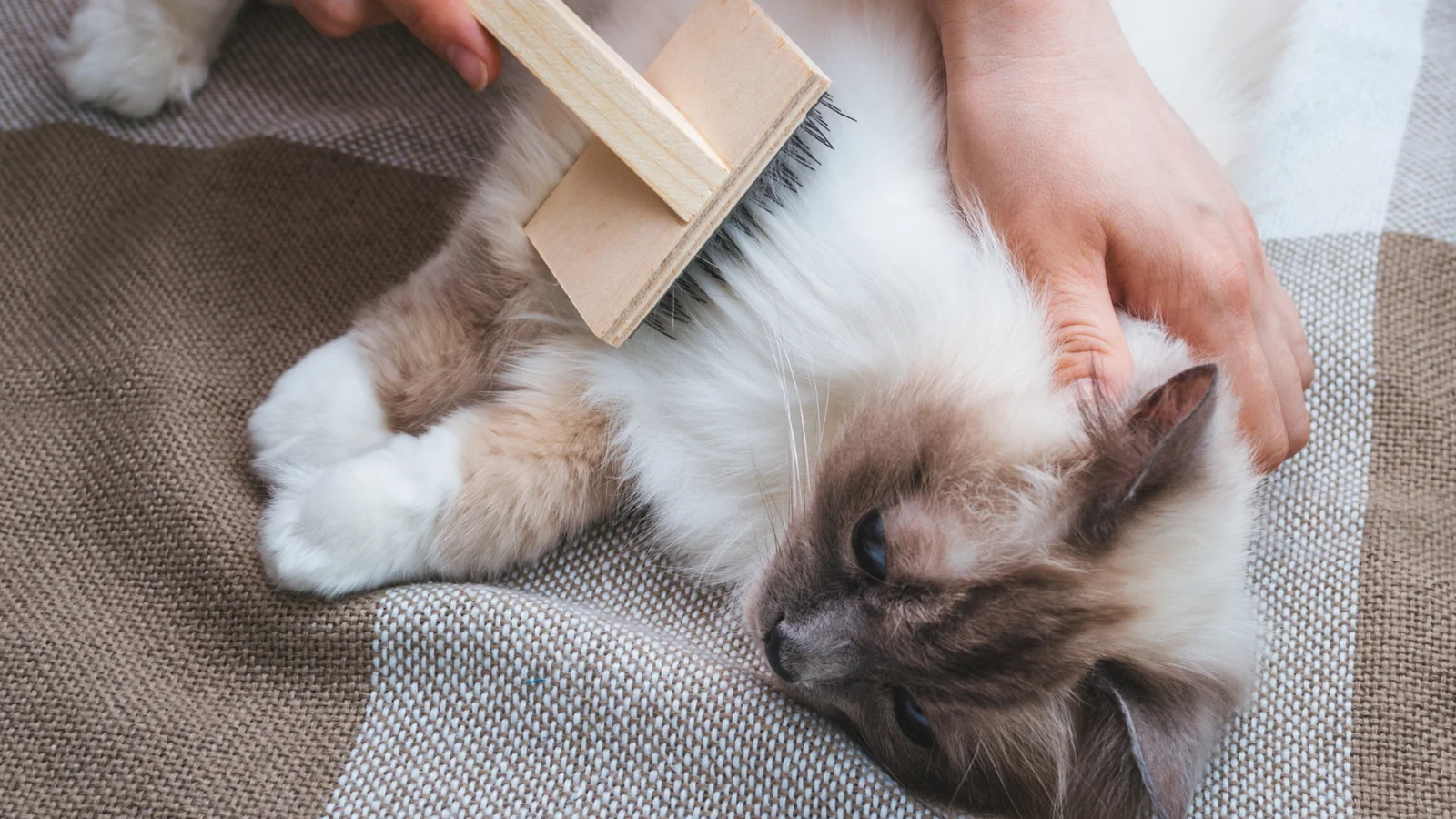How to Take Care of a Ragdoll Kitten: The Complete Ragdoll Kitten Care Guide
Ragdoll kittens possess the most striking blue eyes, softest coats, and loving temperament. If you’ve recently adopted one or are in the process of adopting one, congratulations! You’re in for a delight. But owning a Ragdoll kitten isn’t all play and no work; it comes with responsibilities too. This is a comprehensive guide to Ragdoll kitten care, including nutrition, grooming, socialization, and veterinary care, so keep reading!.
Why Ragdoll Kittens Need Special Care
Ragdolls are no ordinary cats. They’re easygoing, affectionate, and enjoy human companionship. Their easygoing nature and silky coats require special attention. Understanding the specific requirements of the breed will allow you to raise a healthy, happy, and well-adjusted cat.
1. Providing the Perfect Environment
Get your home ready before your Ragdoll kitten’s arrival to make it safe and comfortable.
Essentials:
- Soft bedding or a cat bed
- Scratching post or pad
- Clean litter box
- Food and water bowls
- Toys for physical and mental stimulation
- A quiet, secure spot for the first few days
Pro tip: Ragdolls are strictly indoor cats. Their trusting nature puts them at risk when they’re outdoors.
2. Nutrition: Feeding Your Ragdoll Right
Proper nutrition is one of the cornerstones of good Ragdoll kitten care. Because they’re slow-growing and become large adults, they need a well-balanced diet for slow, healthy growth.
What to Feed:
- Premium kitten food (canned and dry)
- High protein content (choose real meat as the first ingredient)
- Grain-free food for sensitive stomachs
How Often:
- Less than 6 months: 3-4 times a day
- 6-12 months: 2-3 times a day
- Always provide fresh water
Don’t give human food, especially onions, garlic, chocolate, and dairy.
3. Grooming That Luxurious Coat
Although they have long hair, Ragdolls are relatively low-maintenance, though grooming is required.
Grooming Tips:
- Brush 2-3 times a week to prevent matting
- Use a soft bristle brush or stainless steel comb
- Check behind the ears and under arms for knots
- Wipe eyes with a damp cloth as needed
Start grooming early so your kitten gets used to it. It can be a bonding experience!
4. Litter Training and Hygiene
Most Ragdoll kittens are litter-trained by the breeder, but you can reinforce good habits.
Litter Box Tips:
- Put the box in a quiet, convenient area
- Scoop daily, clean weekly
- Use unscented, clumping litter
- One box per cat, plus one extra
Accidents? Gently put the kitten in the box after meals or naps.
5. Socialization and Play
Ragdolls love human interaction and gentle play. This is where they shine!
Best Toys:
- Wand toys
- Feather teasers
- Puzzle feeders
- Soft balls
Socialization Tips:
- Handle your kitten every day
- Gradually introduce new people and pets
- Positive reinforcement (praise and treats)
No roughhousing or loud noise; Ragdolls are sensitive and can be skittish.
6. Vaccinations and Vet Care
Veterinary care is critical to maintaining your kitten’s health.
First-Year Vet Requirements:
- Vaccinations (F3, FIV, rabies if required in your state)
- Flea and worm control
- Microchipping
- Spaying/neutering (if not already done)
Schedule a vet appointment within the first week of adoption to create a care plan.
7. Ragdoll Temperament
Ragdolls are generally “puppy-like” in temperament. They will follow you everywhere, greet you at the door, and even play fetch.
What to Expect:
- Gentle, loving nature
- Moderate energy level
- Not overly chatty but love to talk
- Adore being held and cuddled
Meeting their emotional needs is just as important as feeding or grooming them.
8. Keeping Your Kitten Safe
As Ragdolls are such a trusting breed, they rely on you to protect them from harm.
Safety Tips:
- Keep them indoors
- Fit screens to windows and balconies
- No small toys that they can swallow
- Keep electrical cords and toxic plants out of reach
If you must find them outdoors, use a harness and leash under supervision.
9. Creating a Routine
Cats are habitual, and Ragdolls are no different.
Daily Routine Ideas:
- Morning: Feed and quiet play
- Midday: Quiet time or sleep
- Evening: Playtime with interaction and dinner
- Night: Cuddle and brush time
Be consistent to help your kitten trust you more and be less anxious.
10. Knowing When to Call the Vet
It’s all part of responsible Ragdoll kitten care to recognize when something’s not right.
Red Flags:
- Sudden lethargy
- Loss of appetite
- Diarrhea or vomiting
- Shortness of breath
- Excessive scratching or licking
Trust your instincts. If your kitten isn’t “right,” it’s always best to check in rather than wait.
11. Coming into Adulthood
Ragdolls mature slowly. They don’t reach full size until 3-4 years of age.
At Approximately 12 Months:
- Graduate to adult cat food
- Reduce to twice-daily feeding
- Reassess toy and enrichment needs
Continue with annual vet visits and adjust care as your cat ages.
12. Building a Lifelong Bond
Most of all, your kitten needs love and companionship.
How to Bond:
- Quality time every day
- Speak to them (they love the sound of your voice)
- Be respectful of their boundaries
- Include them in your daily life
A well-loved Ragdoll is one of the best pets you’ll ever have.
Final Thoughts: Ragdoll Kitten Care Is a Joyful Commitment
Ragdoll kitten care is more than grooming and feeding—it’s a lifelong relationship. Give the right environment, attention, and love, and your Ragdoll kitten will grow into a beautiful, gentle adult cat that graces your home with happiness every day. Ragdoll kitten care
If you’re still considering bringing a Ragdoll into your life, we’re here to help. We have happy, healthy rescue kittens avaliable and would be happy to answer your questions. Contact us today to learn about our current litters.









